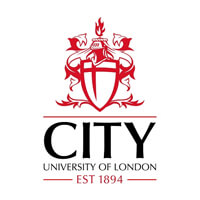fees waived
Civil and Infrastructure Engineering, MEng (Hons)
City, University of London, United Kingdom
Subject ranking
UK / ARWU 2024 21st
UK / CUG 2024 32nd
UK / THE 2025 36th
Costs
food & rentS$25.1K / year
Entry requirements
Scholarships
Limited quantity
Information
Code
Intakes
Website (External)
Programmes
Information
Duration
2029
This integrated master's degree in civil and infrastructure engineering encompasses key areas such as structural, geotechnical, and hydraulic engineering, delivered through collaborative design projects. Over four years, students develop professional skills in sustainable solutions, including individual and group projects, while an optional industry placement enhances employability. The curriculum emphasizes innovation, social responsibility, and access to advanced facilities like the Geotechnical Centrifuge, alongside strong industry connections in central London.The program prepares graduates for roles with firms like AECOM and Arup, contributing to projects such as HS2 and major infrastructure. It meets academic requirements for Chartered Engineer status and includes modules on mechanics, design, and management, assessed through coursework, exams, and projects. With a focus on sustainability and resilience, this degree fast-tracks careers in a low-carbon future.
You’ll develop a strong technical background for civil and infrastructure engineering. The Engineer in Society is an innovative theme across each year. We introduce you to the economic, social and technical context where engineers work, and develop your social responsibility, knowledge, and topical engineering skills. Year 1 Our shared engineering first year allows you to build a foundation in mathematics, engineering, physics, fluid mechanics, material, electronics and programming. You will take diverse engineering design projects. The Engineering in Society - Social responsibility (15 credits) Engineering Design 1 (15 credits) Introduction to Mechanics of materials and manufacturing (15 credits) Electronics - including circuits, digital and analog electronics (15 credits) Introduction to programming (15 credits) Engineering Science (15 credits) Mathematics 1 (15 credits) Introduction to Thermodynamics and Fluid Mechanics (15 credits) Year 2 You begin to specialise through modules including geology, soil mechanics, materials and structures, data analysis and surveying. You complete a design project in partnership with local engineering consultancies. -The Engineer in Society: Sustainability and Circular Economy (15 credits) -Mathematics 2 (15 credits) -Engineering Design 2 (15 credits) -Fluid Mechanics (15 credits) -Geology and Materials (15 credits) -Structural and Soil Mechanics (15 credits) -Sensor Systems, Instrumentation and Surveying (15 credits) -Data Analysis for Engineers (15 credits) Year 3 Take applied modules in analysis and design of typical geotechnical, hydraulic and structural forms, using computational analysis techniques and management. You will undertake the design of urban infrastructure. -Individual project (30 credits) -The Engineer in society: Infrastructure for Net Zero (15 credits) -Finite Element Analysis of Structures (15 credits) -Geotechnical Engineering (15 credits) -Design of Urban Infrastructure (15 credits) -Hydraulics and Marine Infrastructure (15 credits) -Construction Management and BIM (15 credits) Year 4 Transition to professional practice with an integrated design project, supported by industry partners and complemented with advanced modules. -Design project (group): Integrated Infrastructure Project (30 credits) -The Engineer in Society: Infrastructure Resilience (15 credits) -Energy Infrastructure and Sustainability (15 credits) -Structural Dynamics and Stability (15 credits) -Analysis of Geotechnical Infrastructure (15 credits) -Computational Fluid Dynamics (15 credits) -Energy in the Built Environment (15 credits) -Information Management and BIM in Construction (15 credits) -Introduction to Temporary Works - Online (15 credits) -Project Funding and Finance (15 credits) -Design of Concrete Structures (15 credits) -Design of Steel and Composite Structures (15 credits) -Bridge Engineering (15 credits) -Earthquake Analysis of Structures (15 credits)

